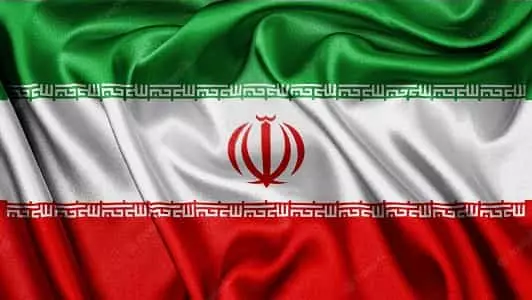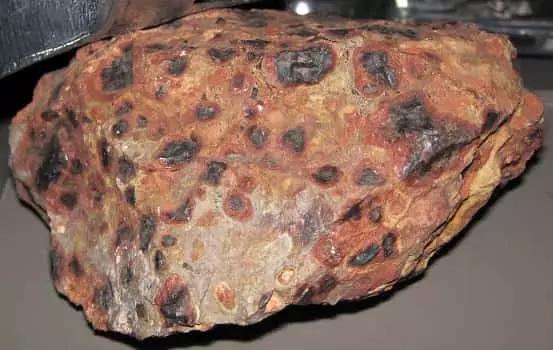Just look away from your device’s screen for a second, and take note of your surroundings. You may see concrete-built houses and buildings in your locality, of course, that’s what you’ll notice if you are not living in a jungle or something. And all that construction you see anywhere in the world is primarily possible because of cement. Cement works as a binder between concrete and other construction elements. You’ll rarely see cement being used all alone, it is rather used to bind gravel, and bricks together to construct buildings and other structures.
Have you ever wondered how cement is actually made? Well, the process is pretty simple but requires humongous manpower to carry out cement production on a large scale. Cement manufacturers usually have mining sites where they collect base materials like limestone, clay, slate, silica sand, iron ore, and a few other materials. These materials are further processed by crushing and baking to form something called cement clinkers. Manufacturing companies then crush cement clinkers into very thin powder which is called cement.
You may already know where cement is utilized and how it is actually made, but the interesting thing to look at is which country produces the most amount of cement in the world. Well, today’s post is solely dedicated to that because we will be taking a look at the top 10 largest cement producers in the world. So let’s get down to it then. Shall we?
List of Leading Cement Producers In The World
1. China
In the last three decades or so, China’s growth has been phenomenal, the communist government has been urbanizing China faster than any other country in the world. That is the prime reason you may see China in the top spots of most of the material and other production lists. China is one of those countries where almost all people live in buildings or houses made out of solid materials like concrete and cement. On the other hand, people in Western countries usually prefer wood for house construction. That is the prime reason why the demand for cement in China is higher than in any other country in the world. No matter if it’s roads, buildings, railways, airports,s or any other type of construction, China uses an enormous amount of cement to build a strong infrastructure. Thus, since the last decade or so, China has been producing around 2500 million metric tonnes of cement every year consistently.
2. India
India produces just over 10% of China’s cement production in one fiscal year. Still, India holds the title of the second-largest cement producer in the world. Over the last two decades, India’s cement production is increasing by 5 to 6 percent every year. Back in 2014, India produced around 280 million metric tonnes of cement, but last year, the total production amount was more than 330 million metric tonnes in a year. Ultratech Cement, Ambuja, and ACC are the major companies that account for the most amount of production and distribution of cement in the country. A considerable portion of India’s cement production is used in the real estate sector for construction purposes.
3. Vietnam
If you were to look at the largest cement producers list from 2011 or before, you would not have found Vietnam’s name on that list. It was quite recently when Vietnam bumped up its cement production and that is how it has become the third largest cement producer in the world. Not just that, if we were to make a list of the largest cement exporters in the world, then Vietnam would hold the first spot. That is because Vietnam’s cement export sector is bigger than any other country, it generates more than 2.1 billion dollars by exporting cement to other nations. And that is only possible because Vietnam produced well over 101.2 million metric tonnes of cement last year.
4. The United States
The USA used to be the third largest cement producer in the world, but now Vietnam has surpassed the USA, thus it is now the fourth largest cement producer in the world. However, unlike any other country, the United States has been somewhat consistent in producing more than 80 million metric tonnes of cement every fiscal year. In 2021, the USA managed to produce well over 92 million metric tonnes of cement, and around $173.2 million worth of cement was exported to other nations. It is estimated that by 2027, the United States of America will surpass the 100 million metric tonnes mark quite easily.
5. Turkey
Most of you may know Turkey as the second largest cement exporter, and that is because Turkey is the fifth largest cement producer in the world. Before 2014, Turkey and Iran were the two most consistent countries to produce more than 70 million metric tonnes of cement every year. Thus these countries would surpass each other with every fiscal year passing by. But Iran’s cement production dipped quite a lot, and Turkey managed to stay consistent, thus Turkey still holds the rank of fifth largest cement producer. Talking about the fresh data about cement production, in 2021, Turkey produced well over 76 million metric tonnes of cement.
6. Indonesia
Throughout the year, Indonesia has ranked up on this list, but the thing is, the cement production in this country has been quite consistent and steady. The ranking up thing is the result of other nations on this list going on a decline in terms of cement production. In the last decade, Indonesia has been producing well over 60 million metric tonnes of cement with a slight growth every year. Thus, in 2021, Indonesia produced around 66 million metric tonnes of cement in just one year.
7. Brazil
If you take a look at the recent cement production data, then you’d see there is not much difference in the production amount between Indonesia and Brazil. Thus you may see Brazil surpassing Indonesia in the coming years. We are saying that because Brazil’s cement production was well over 70 million metric tonnes in 2014-15, but it dipped quite a lot because of the mining problems, and geopolitical issues. In 2021, Brazil produced around 65 million metric tonnes of cement, which is highly likely to increase by a few percent in 2 or 3 years.
8. Iran
There were times when Iran used to be the fourth largest cement producer in the world, but because of geopolitical issues, the cement production dipped by a significant difference. Similar to Brazil, Iran used to produce more than 75 million metric tonnes of cement every fiscal year before 2014. And the total production amount is decreased to just 62 million metric tonnes in 2021. According to experts, cement production in Iran is highly unlikely to increase in the coming five years. But there is an abundance of minerals and materials that are required to manufacture cement clinkers. Therefore, if Iran managed to work on geopolitical relations, and build a strong infrastructure, it can possibly rank higher on this list.
9. Russia
Russia is one such country that is also on a decline when it comes to annual cement production. Before 2015, Russia used to produce nearly 70 million metric tonnes of cement every fiscal year, but that has changed now. According to a statistical report from last year, Russia produced just over 56 million metric tonnes of cement, which will continue to decline in the coming few years. Russia has a wide land area for the mining of essential minerals and materials for the manufacturing of cement, but they don’t have access to the latest technologically advanced tools and machinery to do so.
10. Saudi Arabia
Similar to middle eastern countries like Iran, Saudi Arabia’s cement production is also on a decline for almost the same reasons. Cement export from Saudi Arabia adds up extra $245.7 million to the economy, which is why they have a proper cement manufacturing infrastructure or sector in place. The manufacturing cost is increasing year by year in Saudi Arabia, and the demand for cement imported from Saudi Arabia isn’t as considerable as other nations on our list. That is the prime reason, cement production is being intentionally decreased every fiscal year.
Conclusion
Alright, these were the top 10 largest cement producers in the world. If your country’s name is on this list, you should take a look at what companies are responsible for producing the most amount of cement. For sure, the largest cement manufacturing companies in the world are another interesting topic to talk about.
Cement Production FAQs
Q1. What Are The Key Ingredients In Cement, And Where Do They Come From?
Ans: Cement is a critical component in construction, and its main ingredients are limestone, clay, and other additives. Limestone is a sedimentary rock primarily composed of calcium carbonate, which is typically extracted from quarries. Clay, a fine-grained natural rock or soil material, consists mainly of hydrous aluminum silicates. It is sourced from open pits or underground mines. Additional additives like gypsum, fly ash, or slag may be added to enhance the properties of cement.
Q2. What Are The Biggest Challenges Facing Cement Producers?
Ans: Cement producers face a range of challenges in today’s industry, including, Environmental impact, Fluctuating demand, Stringent regulations, Resource depletion, and whatnot.
Q3. What Is The Process Of Making Cement Clinker, And How Long Does It Take?
Ans: Cement clinker is produced through a process known as pyro processing. The steps in clinker production include Raw materials preparation, Preheating and pre-calcining, Clinker formation, and Cooling and storage. The entire process, from raw materials preparation to clinker cooling, can take between 2 to 3 hours.
Q4. What Are The Main Factors That Determine The Quality Of Cement?
Ans: The quality of cement is influenced by several factors, including, Raw materials, Manufacturing process, Grinding, and Additives. In order to produce a perfect and fine batch of cement, the combination of all these factors should be about right.
Q5. What Are Some Of The Major Safety Risks Associated With Cement Production?
Ans: Cement production can pose various safety risks, such as High temperatures, Dust exposure, Noise pollution, Chemical hazards, etc. These safety risks can be quite dangerous for the workers working at cement production plants, and to mitigate these risks, it’s essential for cement producers to adhere to safety guidelines, provide appropriate protective equipment, and invest in employee training.

























